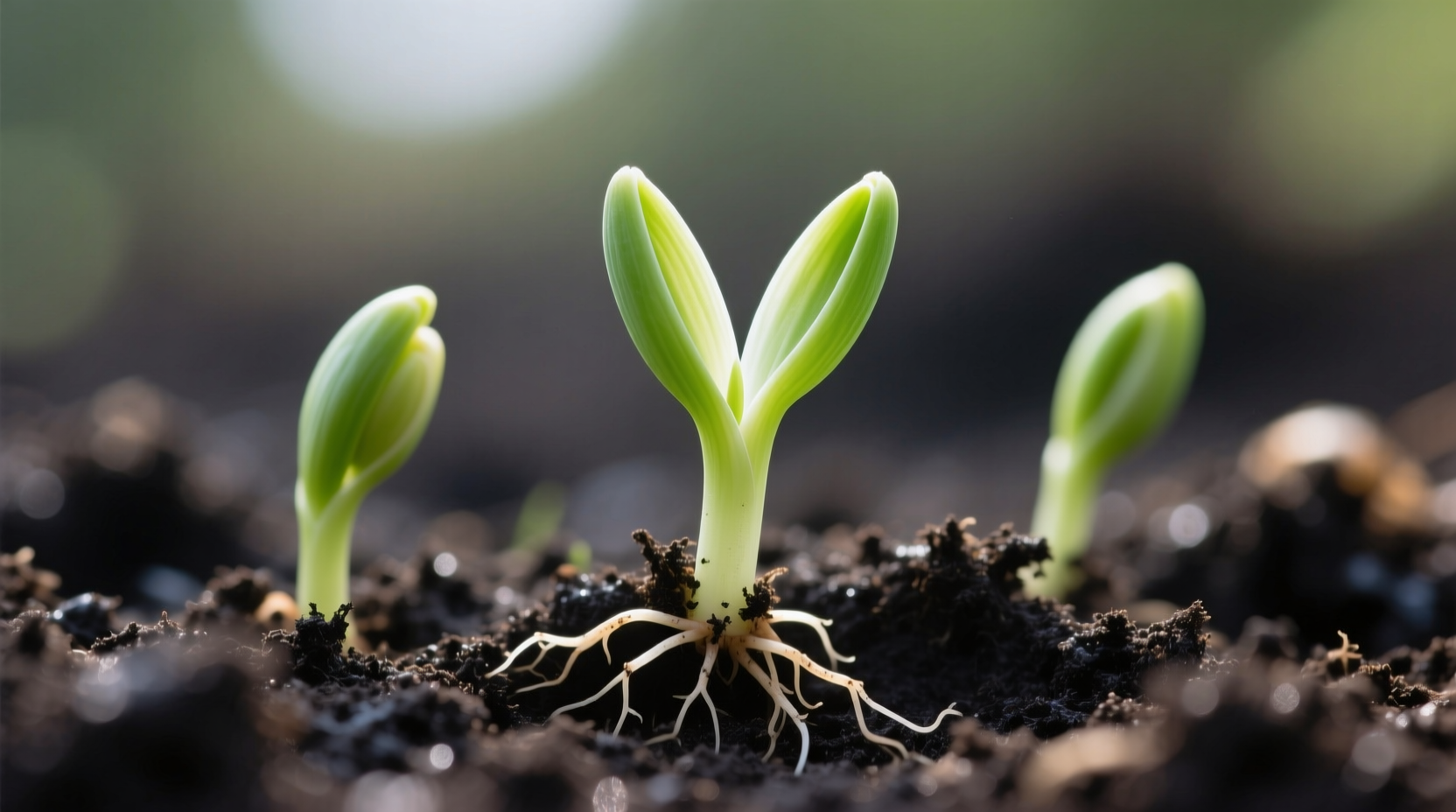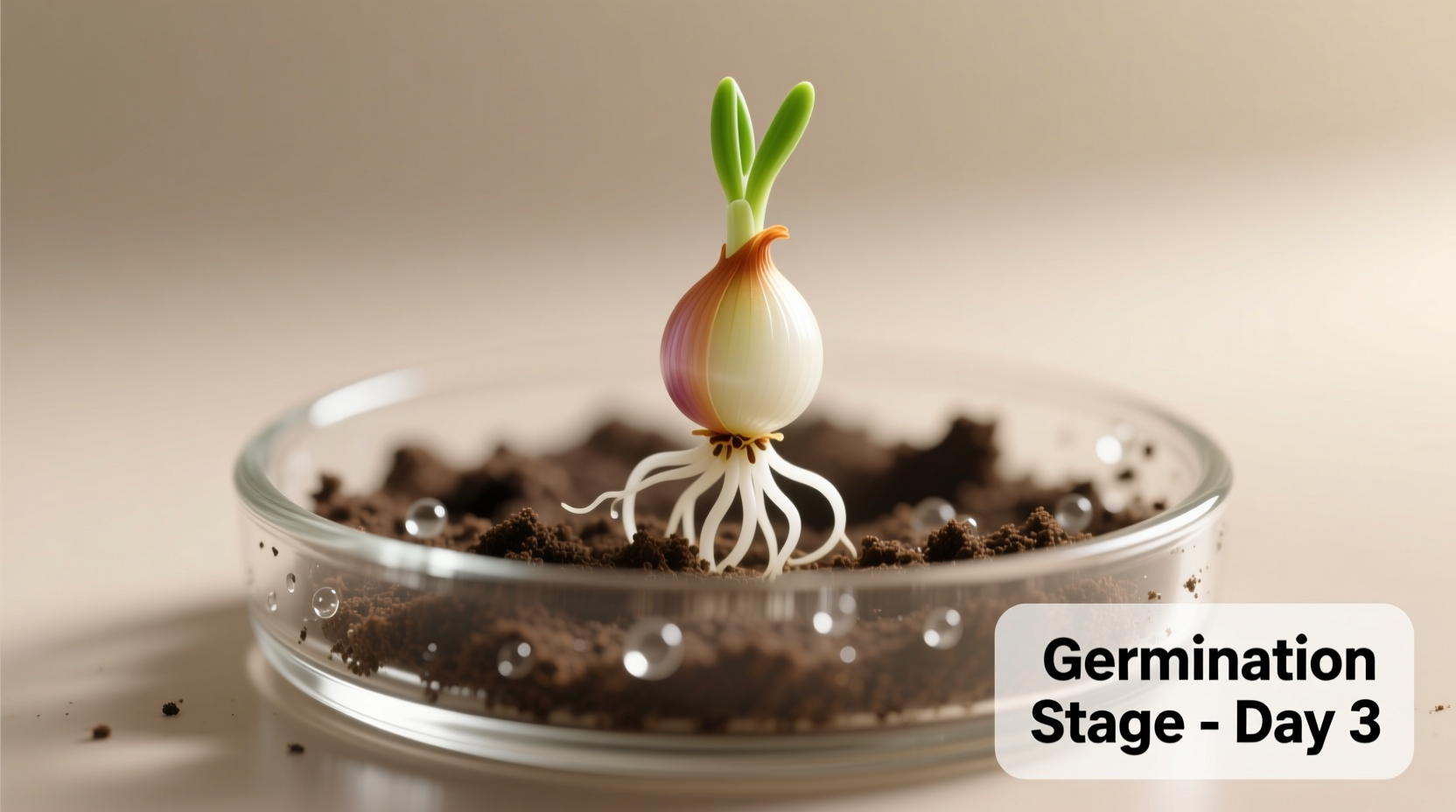Why Start Onions from Seed Instead of Sets?
While many gardeners opt for onion sets for convenience, starting from seed offers significant advantages. You'll access 3-5 times more variety options, including heirloom and specialty types unavailable as sets. Seed-grown onions develop stronger root systems, leading to larger, healthier bulbs at harvest. Plus, you'll save 40-60% compared to purchasing sets, especially when growing multiple varieties.
The Critical Germination Requirements
Successful onion seed germination depends on four precise conditions working together. Get any one wrong, and your germination rate plummets. Let's break down each requirement with specific measurements you can follow:
| Germination Factor | Optimal Range | Critical Threshold |
|---|---|---|
| Soil Temperature | 65-75°F (18-24°C) | Below 50°F (10°C) = no germination |
| Moisture Level | Consistently moist | Dry for 12+ hours = seed death |
| Planting Depth | 1/4 inch (6mm) | Deeper than 1/2 inch = failed emergence |
| Light Exposure | None during germination | Required immediately after sprouting |
This temperature data comes from the University of Minnesota Extension's vegetable gardening guide, which has tracked onion germination success across multiple growing seasons. Their research confirms that temperatures below 50°F essentially halt the germination process, while temperatures above 80°F significantly reduce germination rates.
Step-by-Step Germination Process
Preparation Phase (Day 0)
Start with fresh onion seeds (less than 1 year old for best results—onion seeds lose viability quickly). Fill seed trays with a sterile seed starting mix, not regular potting soil. Moisten the mix thoroughly until it feels like a damp sponge, then let excess water drain for 15 minutes.
Planting Technique (Day 0)
Sprinkle seeds evenly across the surface, aiming for 1 seed per square inch. Gently press them into the soil surface, then cover with 1/4 inch of additional mix. Water lightly using a spray bottle to avoid displacing seeds. Label each variety clearly.
Incubation Environment (Days 1-7)
Cover trays with humidity domes or plastic wrap to maintain moisture. Place in a warm location (65-75°F) away from direct sunlight. Check daily for moisture—the surface should never dry out but shouldn't be soggy either. Most onion varieties show first signs of germination between days 5-7.

Germination Timeline: What to Expect Each Day
Understanding the precise germination timeline helps you identify problems early. Here's what happens beneath the soil during each critical phase:
- Days 1-3: Seeds absorb water and swell. The protective seed coat softens. No visible changes yet.
- Days 4-6: Radicle (first root) emerges and grows downward. This is happening underground—still no visible signs.
- Days 7-9: Coleoptile (protective sheath) pushes through soil surface. First visible sign of germination.
- Days 10-14: True leaves emerge from the coleoptile. Seedlings require light immediately.
This developmental sequence is documented in the Oregon State University Extension Service's onion growing guide, which details the biological processes occurring during each stage. Their research shows that providing light too early (before the coleoptile emerges) wastes energy, while delaying light after emergence causes weak, leggy growth.
Transplanting Seedlings Successfully
Transplant when seedlings reach 3-4 inches tall with pencil-thin stems. Begin hardening off 7-10 days before transplanting by gradually exposing seedlings to outdoor conditions. Start with 1 hour of morning sun on day one, increasing exposure by 1-2 hours daily.
When planting in garden beds, space seedlings 4-6 inches apart in rows 12-18 inches apart. Plant at the same soil depth they grew in trays—onions form properly only when planted at the correct depth. Water thoroughly after transplanting and apply a light mulch to maintain consistent soil moisture.
Common Germination Problems and Solutions
Even experienced gardeners encounter these frequent onion seed challenges. Here's how to identify and fix them:
Damping Off Disease
Symptoms: Seedlings collapse at soil line, often with white fungal growth Solution: Prevent with sterile seed mix, proper air circulation, and bottom watering. Treat with chamomile tea spray (1 tbsp dried chamomile per cup of boiling water, cooled) which contains natural antifungal compounds.
No Germination After 14 Days
Causes: Old seeds, incorrect temperature, or planting too deep Solution: Test seed viability by placing 10 seeds between damp paper towels in a warm location. If less than 70% germinate, replace your seed stock.
Weak, Leggy Seedlings
Causes: Insufficient light, overcrowding, or excessive heat Solution: Provide 12-16 hours of bright light daily (grow lights positioned 2-3 inches above plants), thin crowded seedlings, and maintain temperatures below 75°F after germination.
Pro Tips for Maximum Germination Success
- Use a seedling heat mat to maintain consistent bottom heat at 70°F—this improves germination rates by 25-40% according to Cornell University research
- Mist seeds with chamomile tea solution instead of plain water to prevent fungal diseases
- Rotate trays daily for even light exposure and straighter growth
- Feed with diluted seaweed extract once true leaves appear to boost root development
Frequently Asked Questions
How long does it take for onion seeds to germinate?
Onion seeds typically germinate in 7-14 days when maintained at 65-75°F (18-24°C). Cooler temperatures extend this period up to 21 days, while temperatures above 80°F can reduce germination rates significantly. The first visible sign is the coleoptile pushing through the soil surface around days 7-9.
Can I germinate onion seeds on a paper towel?
Yes, the paper towel method works well for testing seed viability. Place 10 seeds between damp paper towels in a sealed plastic bag, keeping them at 70°F. Check daily for germination starting at day 5. However, for actual planting, transplant seedlings to soil within 24 hours of sprouting to prevent root damage as they quickly develop delicate root systems.
Why are my onion seeds not germinating?
The most common reasons include: seeds older than 1 year (onion seeds lose viability quickly), soil temperature below 50°F, inconsistent moisture (drying out even briefly), or planting too deep. Test your seeds' viability using the paper towel method. If less than 70% germinate, replace your seed stock. Ensure consistent warmth and moisture for best results.
Should I soak onion seeds before planting?
Soaking isn't necessary but can improve germination rates. If you choose to soak, place seeds in room-temperature water for 12-16 hours (no longer). This softens the seed coat and jumpstarts the germination process. Immediately plant soaked seeds at the proper depth and maintain consistent moisture. Don't let soaked seeds dry out before planting.











 浙公网安备
33010002000092号
浙公网安备
33010002000092号 浙B2-20120091-4
浙B2-20120091-4